Mixing through shear instabilities |
Observations suggest that current theories of the interior workings of stars seem to underestimate the efficiency of mixing processes. A number of stars show much stronger traces of heavy elements, such as carbon and nitrogen, on their surfaces than predicted. These elements are produced in the centre of stars, so that their occurrence at the surface seems to suggest that they must have been swept up from the centre of the stars by a mechanism that so far has been unaccounted for. Since these `anomalies' are particularly pronounced for fast rotating stars, it is believed that the mixing processes are related to the rotation of the star. The prime candidate for rotationally induced mixing is the so-called shear instability. It occurs when neighbouring fluid layers move with different velocities, and it is the same mechanism whereby wind creates waves on water.
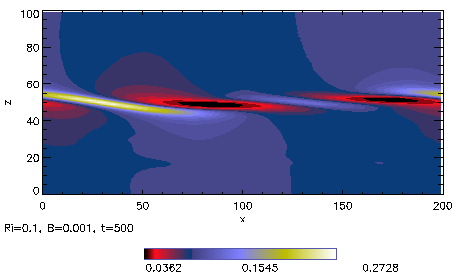
|
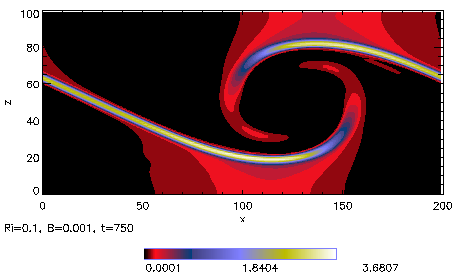
|
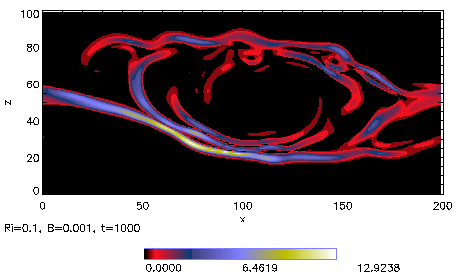
|
Figure 1:Snapshots of the magnetic energy at various times during a 2D simulation of a magnetised shear flow. At the beginning, both, the flow and the magnetic field are horizontal. In the bottom half of the computational box the fluid flows to the right and in the top half to the left. The magnetic field follows more or less the fluid. One can see that initially, the flow undulates slightly before a big swirl forms which subsequently decays. |
At the Max-Planck-Institut für Astrophysik, M. Brüggen and W. Hillebrandt are undertaking an extensive study on how the efficiency of mixing varies with the velocity difference between neighbouring fluid layers. For this purpose, they performed three-dimensional computer simulations and measured the mixing of the fluid parcels. They found that the mixing efficiency is significantly different from what was previously thought.
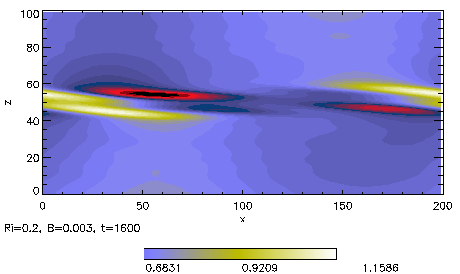
|
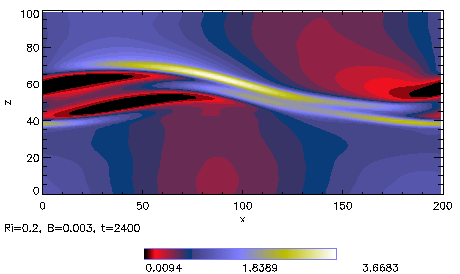
|
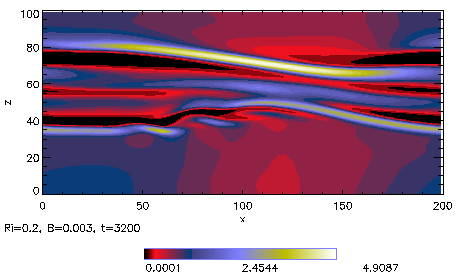
|
Figure 2: The same as Fig. 1 only for a much stronger magnetic field. One can see that the magnetic field prevents the formation of a big vortex (swirl) and strongly suppresses the mixing of fluids. |
In addition, they investigate how a magnetic field can affect the
mixing efficiency and morphology of the shear instability. This is
also of considerable astrophysical interest, since strong magnetic
fields are believed to exist in the centre of stars. The magnetic
fields were included in the computer simulations, which are amongst
the first of their kind and have only become feasible with recent
advances in computing power. Again, surprising results were found,
with the magnetic field being able to suppress as well as enhance
mixing, depending on the strength of the magnetic field.
It is hoped that these findings might help to solve some of the
mysteries of the rotating stars.
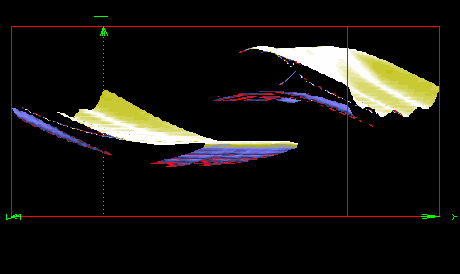
|
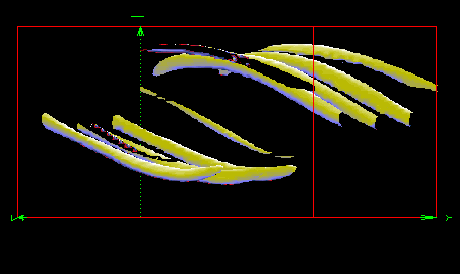
|
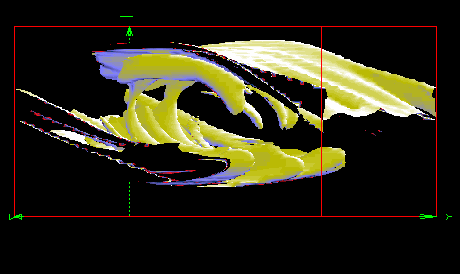
|
Figure 3: Visualisation of the magnetic energy in a 3D simulation (same setup as in Fig. 1). Again, the different panels show snapshots at different times. One can notice how the magnetic field breaks up into separate horizontal flux ropes which are torn apart by the big vortex. |
Marcus Brüggen, Wolfgang Hillebrandt
Further reading:
| MPA-Home |